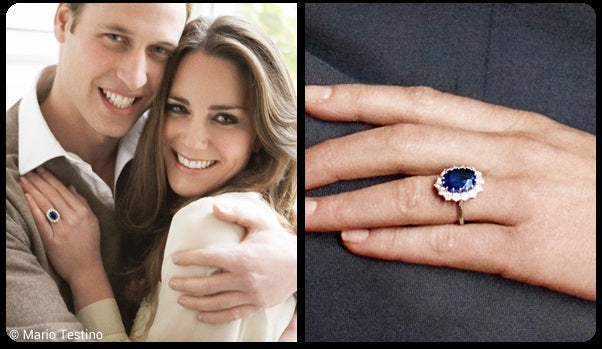Gemstones & The Invisible Hand March 06 2016
Buying your first gemstone jewelry can be an exciting and daunting task. With so many nuances to take into consideration, the choice of a lush blue sapphire surrounded by sparkling round diamonds can become mesmerizing and over whelming. One factor that is almost always a concern is why are they so darned expensive? This blog hopes to bring some clarity into the realm of gemstone prices and give you a better understanding how what makes that shimmering jewel so special.
According to the International Colored Gemstone Association, the prices for exquisite, top quality sapphires have risen by over forty percent over the last couple of years. Gemstone dealers may now require prices exceeding $150,000 per carat when it only fetched about $92,000 in 2009. This upsurge in prices for gemstones have been highlighted by the contemporary celebrity endorsements which have showered a great deal of glamor and grace to the colored gemstone market. For example, the blue sapphire witnessed a phenomenal increase in value as Prince William proposed to Kate Middleton with a stunning blue sapphire and diamond engagement ring. The ‘Middleton Effect’ as it has come to be known has had a strong impact on the overall gemstone market.
The growth in value for sapphires and others colored gemstones are buttressed further by the rapidly growing demand from fast developing nations such as China and India. Their cultures and histories have long held colored gemstones as icons of wealth, good fortune and prosperity. As the rich from Shanghai to Mumbai parade their glistening gold and shimmering sapphires, the underlying pries for these gemstones slowly but surely creep up to match their rising incomes and lavish lifestyles. Demand has also risen largely by diversifying investments pouring in from the West. In troubled economic times, many investors seek shelter in tangible sources of value as a form of economic security. Companies such as RareSource are now being asked by their wealthy clients to hedge portions of their portfolios with gold and gemstones from mines as opposed to risky paper backed securities.

Another contributing factor lies within supply shortages. Unlike the artificial mechanisms to create supply constraints in the diamond industry, shortages in colored gemstones such as sapphires and rubies exist though genuine market imbalances such as political interference and poor infrastructure. In addition, finding high quality colored gemstones is extremely difficult even in the best of circumstances. The processes used in mining for the gems are usually much smaller in scale than the those of large diamond miners and hence when coupled with dysfunctional infrastructure such as intermittent electricity outages and politics banning international trade (the US banned the import of rubies from junta-ruled Myanmar in 2008), the supply can become severely limited. Such shortages can further propagate a rapid upsurge in prices for valuable colored gemstones.
The invisible hand of demand and supply play an intricate role in setting the prices of these exquisite gemstones. Hopefully, now you know a little more about the state of prices for gemstones and feel more comfortable whilst you browse through collections to find the perfect sapphire. The recent increase in value may continue on its run or may fall but at least a sapphire can be worn to a date unlike a worthless share certificate.
